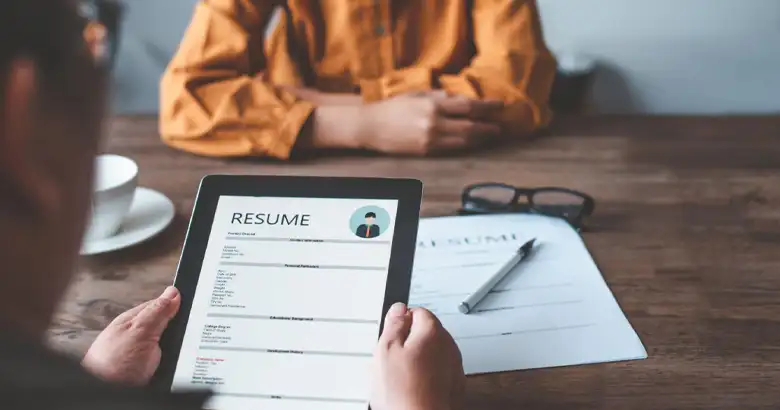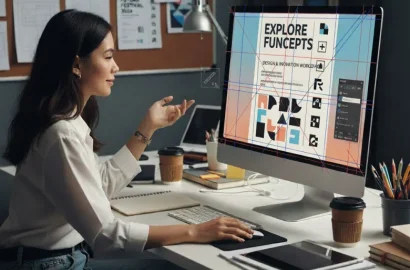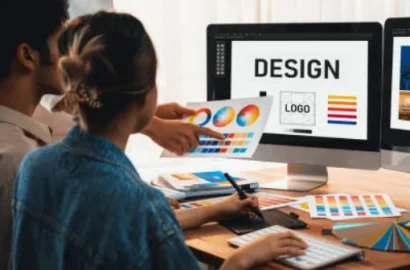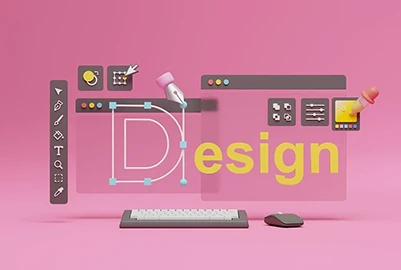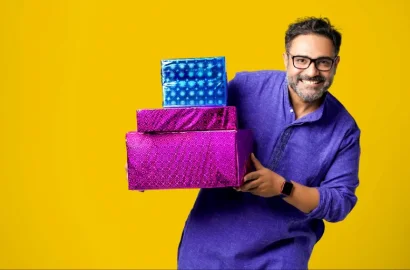Learn how to create a graphic designer resume that showcases your skills, impresses hiring managers, and increases your chances of getting an interview.
Alongside your graphic design portfolio, your resume forms an essential part of your job application package. In fact, it’s the first thing a hiring manager will look at—and first impressions are everything.
You might be the most talented graphic designer around. But, if your graphic designer resume is poorly structured and difficult to read, you’ll struggle to convince employers that you’re a strong candidate.
In this guide, we’ll show you how to create a graphic designer resume that does you justice. We’ll look at how to structure and format your resume, outline the most important skills to highlight, and share some helpful templates and examples.
Keep reading to learn:
- What makes a great graphic designer resume?
- What should you include in your graphic designer resume?
- What are the most important skills to highlight in your graphic designer resume?
- What is the best format for your graphic designer resume?
- How to create an impressive graphic designer resume (step by step)
- Graphic designer resume templates and examples
- The takeaway and next steps
- Graphic designer resume FAQs
What makes a great graphic designer resume?
If you want to start a career in graphic design or apply for your next job in the field, you need a professional graphic designer resume.
Your graphic designer resume should highlight your expertise and position you as a strong candidate for graphic design roles. It does this by capturing your most relevant skills, experiences, and achievements in a concise, logical, and easy-to-read format.
The best graphic designer resumes are:
- Highly relevant and optimized for the roles you want to apply for
- Clean, well-organized, and easily legible
- Concise and focused, ideally spanning no more than two pages
Together with your portfolio, a well-crafted resume will pique the hiring manager’s interest and allow them to assess whether or not you’re suitable for the role in question.
What should you include in your graphic designer resume?
There are several key building blocks that make up a graphic designer’s resume:
- Your name, professional title, and contact details
- Links to your graphic design portfolio and relevant social profiles (like LinkedIn)
- A brief personal profile (similar to an elevator pitch, only in written form)
- A concise summary of your main skills (plus any industry-relevant tools you’re proficient in)
- Your educational background and qualifications
- Your employment history
Let’s explore each component in detail, with some examples.
i. Your name, professional title, and contact details
State your name, professional title, and contact details at the very top of your graphic designer resume.
Your professional title is essentially your current job title or the title that best describes your expertise—for example, Senior Graphic Designer or Motion Graphics and Animation Designer.
Beneath your name and title, share your email address, and phone number (with the dialing code). You might also choose to state your location (i.e. city/town and country).
ii. Links
Together with your contact details, including links to your graphic design portfolio and any relevant professional profiles (e.g. LinkedIn). Before you finalize your resume and send it off to employers, double-check all links to make sure they work.

iii. Your profile summary
This is your written elevator pitch: your chance to introduce yourself and make an impression.
Your profile summary should deliver a powerful value statement. First, summarise who you are as a professional—honing in on your key skills and area(s) of expertise—and second, state what you’re looking for in your next role.
We recommend keeping your profile summary to a maximum of five sentences. It should be concise and impactful, inviting the hiring manager to learn more about who you are and what you do.
Here’s an example of a profile summary for a junior graphic designer:
“I am a junior graphic designer with a passion for motion graphics, animation, and digital design. I recently obtained my graphic design diploma from AND Academy and am now seeking my first in-house role, ideally with a high-growth startup in the tech space.”

iv. Key skills and tools
Now we’re getting to the crux of your graphic designer resume: your skills.
In this section, provide a bullet-point list summarising your most relevant graphic design skills, as well as any industry-standard tools and software that you’re proficient in.
Presenting your skills in list format makes it easy for the hiring manager to assess whether or not your skill set matches the requirements of their role.
As a general rule of thumb, your skills list should comprise around 70% technical skills and 30% soft skills. We’ll take a closer look at the most important skills to highlight in your graphic designer resume in section three of this guide.

v. Education and qualifications
This section briefly outlines your educational background and lists any relevant qualifications. For the sake of brevity, include just your highest level of education together with any additional courses and training you’ve completed.
For each qualification, state the name of the school or training provider, the official course title, the year(s) of attendance or completion, and your final grades (if applicable).
vi. Employment history
Your employment history should make up the bulk of your graphic designer resume. This is where you detail your professional experience, giving the hiring manager valuable insight into where you’ve worked and what kinds of responsibilities you’ve taken on.
Start with your most recent position first and work backwards. For each position, share the company name, your job title(s), and your dates of employment.
Then highlight your key tasks, responsibilities, and accomplishments within each role—focusing on what’s most relevant for your current job search. If possible, share specific data or concrete outcomes to demonstrate your impact.
Pro tip for entry-level graphic designers:
If you’re a newly qualified graphic designer looking for your first job in the field, you might worry that your employment history isn’t relevant. So should you just exclude it from your graphic designer resume?
Absolutely not! The key is to emphasize your transferable skills and experience—things that may not be directly related to graphic design but could be transferred to a graphic design role.
This includes things like communication and cross-team collaboration, giving presentations, project management, conducting research, visual communication, and attention to detail.
What are the most important skills to highlight in your graphic designer resume?
Your graphic designer resume should showcase a combination of hard skills—the technical skills that are specific to graphic design—and soft skills.
The exact skills you choose to highlight will depend on the job you’re applying for. You want to demonstrate a match between your skill set and the requirements of the role, so it’s important to emphasize skills that are most relevant for the employer.
At the same time, a junior graphic designer’s resume will showcase a different set of skills than a senior graphic designer’s resume.
With that, let’s explore some of the most important graphic design skills depending on your career level and area of focus.
i. The most important skills for a junior graphic designer resume
Junior graphic designer resumes tend to highlight a well-rounded grasp of fundamental graphic design skills, basic proficiency in graphic design software and tools, and transferable soft skills.
Some of the top hard skills you’ll find on a junior graphic designer resume include:
- Knowledge of fundamental graphic design principles
- Color theory and color psychology
- Layout and composition
- Typography
- Image editing and retouching
- Basic vector illustration
- Web design basics (including some knowledge of UX and UI design principles)
- Print design fundamentals
Among the most important soft skills for a junior graphic designer resume are:
- Communication and Collaboration
- Problem-solving and adaptability
- Creativity and attention to detail
- The ability to give and receive feedback
- Task and project management
ii. The most important skills for a mid-level or senior graphic designer resume
Mid-level and senior graphic designer resumes demonstrate advanced knowledge of graphic design principles and processes, as well as expert proficiency in relevant software and tools.
Here are some of the most important hard skills for mid-level and senior graphic designers to include in their resume:
- Advanced proficiency in graphic design tools (such as Sketch, Figma, Adobe Photoshop, Illustrator, InDesign, and After Effects)
- Expert knowledge of typography, color theory, layout, and composition
- Branding, visual identity, and visual storytelling
- Demonstrable proficiency in UX and UI design (if working in digital graphic design), including wireframing, prototyping, and testing
- Specialist skills such as animation, motion graphic design, and photography
The top soft skills to include in a mid-level or senior graphic designer resume are:
- Communication and Collaboration
- Leadership and mentorship
- Strategic and critical thinking
- Client management
- Advanced project management
iii. Specialist skills for different types of graphic design
Given the many different types of graphic design, the skills you emphasize in your resume will also depend on what type of graphic design you specialize in, where your strengths and expertise lie, and what kinds of roles you want to apply for.

If you specialize in digital graphic design, for example, you’ll want to highlight your skills in that area—such as digital typography and responsive design. If you specialize in packaging design, you’d want your graphic designer resume to emphasize skills such as branding, visual identity, and 3D modeling.
Ultimately, it’s a case of matching your existing skill set to the role you’re applying for—and emphasizing that match accordingly in your graphic designer resume.
What is the best format for your graphic designer resume?
You’re applying for graphic design roles, so the overall design of your resume is especially important. Here are some best practices to keep in mind as you create and format your resume:
- Follow a reverse-chronological format: Share your most recent experience first, then work backwards to earlier roles. This places the emphasis on your current level of expertise, and it’s the most intuitive format for hiring managers and Applicant Tracking Systems (ATS) alike.
- Keep it concise: Aim to keep your resume to two pages if possible, but don’t sacrifice legibility and spacing for the sake of page count.
- Use headings, bullet-point lists, and white space generously: Your graphic designer resume should be a joy to behold, so pay close attention to the layout and styling. Use headings to establish structure and visual hierarchy, bullet-point lists to enhance readability, and plenty of white space for a clean, clutter-free aesthetic.
- Choose a professional, easily legible type: Remember that your graphic designer resume is a professional document, so choose your font accordingly. We recommend using a black sans-serif font in size 12.
- Convert to PDF: PDF is generally the best file format for your resume—but double-check the job ad; employers may have different requirements or preferences regarding the format in which you share your resume.
How to create an impressive graphic designer resume (step by step)
i. Choose your graphic designer resume template or tool
First things first: the practical matter of where and how you’ll create your graphic designer resume.
You can create your resume from scratch using a simple tool like Google Docs, or you can use a customizable template. We’ll share some of the best graphic designer resume templates in section six of this article, so stay tuned for those.
If you use a free template or resume-builder tool, check the tool’s permissions before you start. You want to make sure that you’re able to download and save your resume at the end—and that you can go back and edit the file whenever you need to.
ii. Do your research
Now it’s time to think about the content of your graphic designer resume. The question here is: How can I make sure that my graphic designer resume resonates with employers?
This begins with research. Think about the roles and job titles you’d like to apply for, and the types of companies you’d like to focus on. Then, using job sites like Indeed and LinkedIn, search for relevant roles and read through the job descriptions.
As you do so, note down the most important keywords from each job description. You might choose to create categories or columns to organize the keywords you find—such as Hard Skills, Soft Skills, Tools, Years of Experience, and so on.
This will help you to identify the most important skills and experience for the jobs you’re targeting—and, as such, the most important skills and keywords to include in your graphic designer resume.
iii. Create your graphic designer resume with your dream role(s) in mind
With your top skills and keywords identified, you’re now going to create your graphic designer resume with your dream role(s) in mind. This includes:
- Writing your profile summary—a concise elevator pitch or value statement that summarises who you are, what you do and/or where you specialize, and what kind of role you’re looking for.
- Creating bullet-point lists to highlight your most relevant skills and tools.
- Outlining your employment history (in reverse chronological order) and emphasizing your most relevant experiences and accomplishments in relation to the roles you’re applying for.
For a reminder of all the key elements to include in your graphic designer resume, refer back to section two of this article.
iv. Proofread and share
Once your graphic designer resume is complete, give it a thorough proofread to check that it’s logical and well-structured, free from typos and spelling mistakes and that it effectively conveys the scope of your knowledge, skills, and expertise.
Pay attention to the overall design of your resume, too. Is the format and styling consistent throughout? Is all text clearly legible and easily skimmable? Have you used headings, bullet-point lists, and plenty of white space?
Make any necessary edits, convert your file to PDF format, and share it with at least one other person for a final check. It’s always helpful to get a fresh pair of eyes on it—and to get feedback from someone who isn’t as familiar with your skills and career history as you are yourself.
v. Tailor your resume for each job application
Great stuff—your graphic designer resume is good to go. You can now put it to good use and start applying for your dream roles. Just make sure to tailor your resume for each unique role, paying particular attention to your profile summary. Good luck!
Graphic designer resume templates and examples
Here are some of our favorite graphic designer resume templates and examples to guide and inspire you.
i. Adobe Express
Adobe Express offers a whole host of free, fully customizable graphic designer resume templates—ranging from the bright and colorful to the more subdued and professional.
Simply select your favorite template, click ‘Edit this template’, and either sign in with your email address or continue as a guest. From there, you can edit the template to create your own graphic designer resume.


ii. Freepik
If you’re looking for a sleek, ultra-modern graphic designer resume template, look no further than Freepik. With thousands of templates to choose from, you’re bound to find one that resonates with your personal brand.
Just note that many of Freepik’s resume templates are in PSD format, which means you’ll need to use a program like Adobe Photoshop in order to edit the template and make it your own.
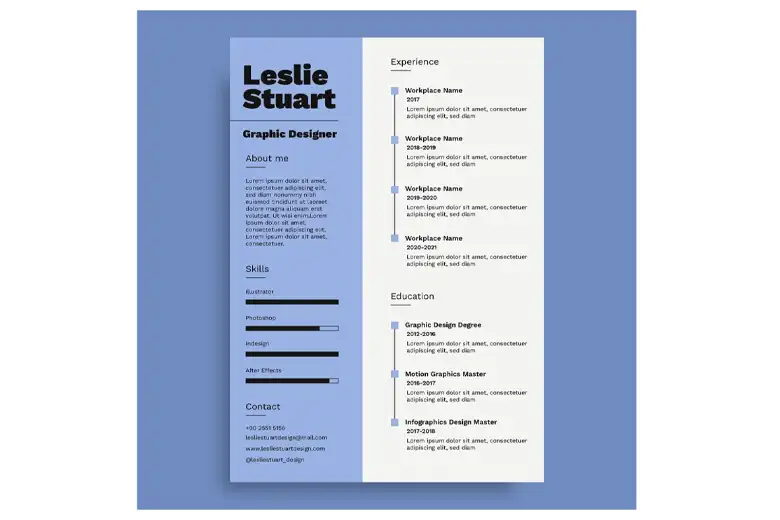
iii. Canva graphic designer resume templates
Canva is not only one of the most popular design tools. It also offers an extensive template library, including a vast selection of graphic designer resume templates.
Filter by style, theme, and price to find suitable options, select your preferred template, and customize it using the simple drag-and-drop editor.

iv. Google Docs resume templates
If you don’t want to spend ages browsing graphic designer resume templates, you can streamline the process with Google Docs. Google Docs offers a simple selection of just five resume templates—all of them highly professional and follow a clean, reader-friendly layout.
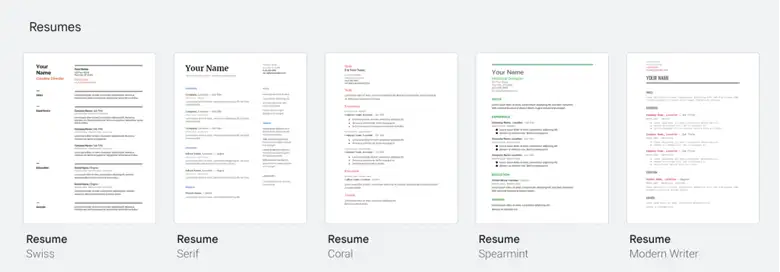
If you’re already logged in to your Google account, navigate to Google Docs, scroll down to ‘Resumes’ in the template gallery, and double-click on the template of your choice. This will open up a new, customizable Google Doc for you to edit.
Once you’re finished, just download your Google Doc in PDF format and you’re good to go.
v. Venngage graphic designer resume templates
A popular graphic design tool, Venngage is typically used for creating infographics. And, as luck would have it, this powerful free platform also includes a great selection of graphic designer resume templates.
If you haven’t got one already, you’ll need to create an account to use the templates. Once you’re in the editor, you’ll have access to a whole host of handy features—including AI-powered editing tools.
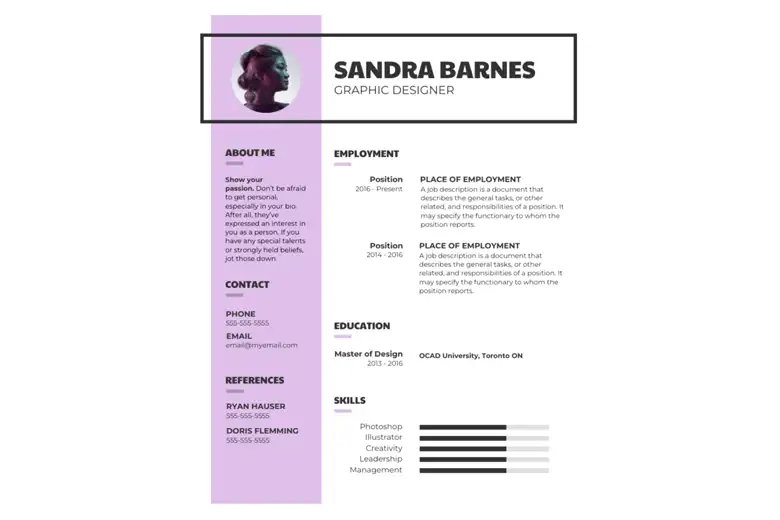
The takeaway
That brings us to the end of our graphic designer resume guide. Your graphic designer resume is one of the first chances you’ll get to impress hiring managers and put your best foot forward for graphic design roles.
Make sure that your resume follows a logical structure, and that it’s easy to skim-read (headings, white space, and bullet-point lists are key!). Most importantly, tailor your resume for each job application—emphasizing your most relevant skills and experiences.
Already thinking ahead to the interview process? Check out these guides for more graphic design career advice:
- The Most Common Graphic Design Interview Questions (And How to Answer Them)
- Your Complete Guide to Graphic Designer Salaries in 2024
- The Benefits of Pursuing a Graphic Design Internship (and How To Land One)
Graphic designer resume FAQs
How do you write a graphic designer resume?
Start with your name, professional title, and contact details, then write a short profile summary. This should capture your most relevant experience and expertise, and share what you’re looking for in your next role. Then outline your top skills, education and qualifications, and your work experience (in reverse-chronological format).
What is a profile summary for a graphic designer?
A profile summary on your graphic designer resume is like a written elevator pitch. It’s a short value statement that captures who you are, what you do, and where your strengths lie. It also outlines your career goals—for example: ‘I’m looking for a senior leadership role in the fintech space.’ Your profile summary should be brief and impactful, convincing employers to read your resume further.
What is the role of a graphic designer?
Graphic designers are experts in visual communication. They use the medium of design to convey a specific message to the target audience—be it through print ads, posters, product packaging, or digital designs. A graphic designer may be responsible for brainstorming concepts, developing a brand’s visual identity, creating a variety of design assets, and maintaining style guides. You can learn more about the role of a graphic designer (and how to become one) in this guide.
Next Steps
We hope this guide to creating a graphic designer resume was valuable to you. As mentioned earlier, along with the resume, a portfolio also plays a vital role in landing a good job role. We highly recommend that you check out this Visual Narrative Project by AND learner Dushyant Singh for inspiration. In case you need further assistance, here are some of our resources you can consider:
- Watch this session by design veteran and AND’s Academic Head, Prachi Mittal, and our Course Lead, Soumya Tiwari.
- Talk to a course advisor to discuss how you can transform your career with one of our courses.
- Pursue our Graphic Design courses – all courses are taught through live, interactive classes by industry experts, and some even offer a Job Guarantee.
- Take advantage of the scholarship and funding options that come with our courses to overcome any financial hurdle on the path of your career transformation.
Note: All information and/or data from external sources is believed to be accurate as of the date of publication.

